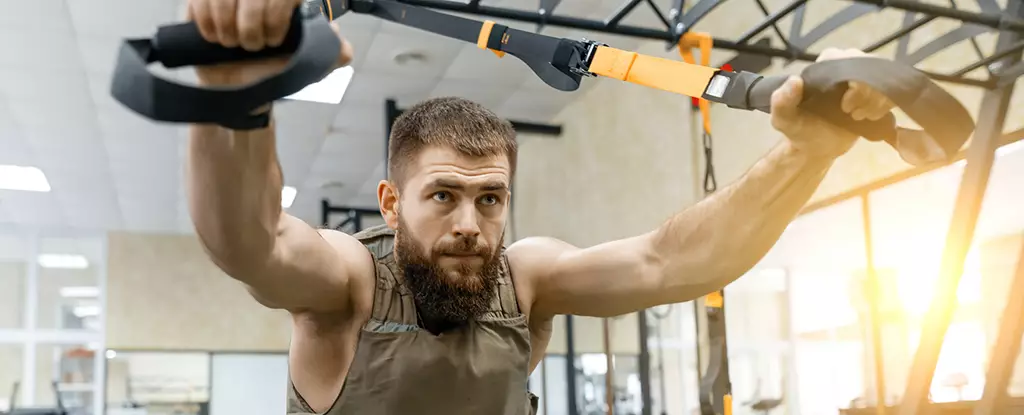In recent times, the use of weighted vests during exercise has gained significant traction within fitness circles, buoyed by social media endorsements and testimonials from trainers. This return to a seasoned training method isn’t just a flash in the pan; it reflects a deeper understanding of how added weight can both challenge and enhance physical fitness. Although the practice of exercising with additional weight has ancient roots—often associated with military training—modern innovations have made weighted vests more comfortable and versatile, leading many to wonder if this training method could be beneficial for their personal fitness journeys.
The concept of training with extra weight is far from new. Historically, soldiers have carried heavy packs over long distances to build endurance and strength. However, contemporary advancements have transformed weighted vests into sophisticated fitness tools that can be adjusted according to an individual’s needs. While many users are eager to reap the benefits of this innovative approach, it’s crucial to consider the scientific evidence and practical implications of incorporating weighted vests into a workout routine.
If we examine studies dating back to the early 1990s, we find intriguing insights. One pivotal study from 1993 explored the impact of weighted vests on older adults, revealing notable improvements in physical functionality and bone health over 20 weeks. Numerous subsequent studies have supported these early findings, indicating that utilizing weighted vests promotes physiological stress that challenges the body’s normal output, as evidenced by increased heart rates and energy expenditure.
Yet, the relationship between body weight and added weight in training isn’t entirely linear. Research suggests that carrying an additional load of around 10% of body weight can effectively enhance the workout’s intensity. However, minimal increases (around 5%) do not seem to offer significant advantages compared to body-weight exercises alone. This insight raises important questions when considering real-world application, especially for those prone to injuries.
Moreover, within the context of biomechanics, various studies have illustrated that running or walking with added weights (ranging from 1% to 10% of body weight) can increase the heart rate and muscular stress without adversely affecting the runner’s form. Though the risk of injury has not been extensively reported in recreational settings, caution should always be exercised, particularly for individuals with pre-existing conditions or those who are new to fitness regimens.
Despite the relative safety of weighted vest training, certain studies have highlighted concerns, particularly with individuals suffering from obesity who reported back pain during their use. This suggests that, while the risks may be minimal for the average person, awareness must be maintained, especially in populations with unique health challenges. If any discomfort arises, reducing the weight or pausing vest training is advised.
Moreover, while the current body of research identifies an increase in energy expenditure during aerobic and resistance exercises when using weighted vests, the evidence regarding fat loss and muscle retention remains somewhat ambiguous. For instance, participants in earlier studies documented improvements in body composition with the use of weighted vests, but later investigations have produced mixed results. This suggests that while weighted training can serve as an effective tool, it should be approached strategically and not be viewed as a cure-all for fitness dilemmas.
For those contemplating the integration of weighted vests into their training, a gradual progression is key. Beginners should focus on establishing a solid foundation of strength and cardiovascular endurance through body-weight exercises. Once comfortable, they can gradually introduce weighted vests, starting with lighter loads (approximately 5% of body weight) before advancing to 10% for high-impact moves.
In terms of resistance training, although weighted vests can help increase the difficulty of exercises like squats and push-ups, more conventional equipment (dumbbells, kettlebells) may offer greater convenience and effectiveness. Workout routines should not become overly complex; the addition of weighted vests should complement a well-rounded training regimen rather than complicate it.
While weighted vests present a viable option for enhancing workout intensity and potentially benefiting bone health, they are just one of many tools available within the fitness landscape. Individuals hoping to improve their physical fitness are reminded that an increase in workout duration or intensity can also yield significant results. As with any training method, understanding one’s individual fitness level, managing existing injuries, and being mindful of progression can greatly influence the efficacy of incorporating weighted vests into exercise routines. Weight training is about finding what best fits your body and goals, so while weighted vests can be beneficial, they should be integrated thoughtfully into a broader fitness strategy.

